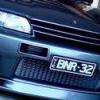Removing Front Right Wheel Speed Sensor
Announcements
-
Similar Content
-
Latest Posts
-
Yep. In the E39 it's slightly different than the others. Honestly I'd just leave it but every time I drive the car it tells me oil is low and that just makes me check the dipstick. It is a BMW Afterall and it tries to expel it's own oil regularly. Thankfully it's not like my E90 that has no dipstick at all so you just gotta trust it.
-
Was that also a typo? $350?! Just typing "BMW oil level sensor" and prices start out a lot more sanely than $350. I'm guessing it's a sensor used in one low volume model only or something?
-
They kept the product number the same, so we "didn't pick it up when packing your order". If you packed the order, you clearly saw the box wasn't Hella...
-
Actually, the equivalent skyline part is both cheaper and simpler, maybe you should come back from the dark side?
-
And we are full
-






Recommended Posts
Create an account or sign in to comment
You need to be a member in order to leave a comment
Create an account
Sign up for a new account in our community. It's easy!
Register a new accountSign in
Already have an account? Sign in here.
Sign In Now